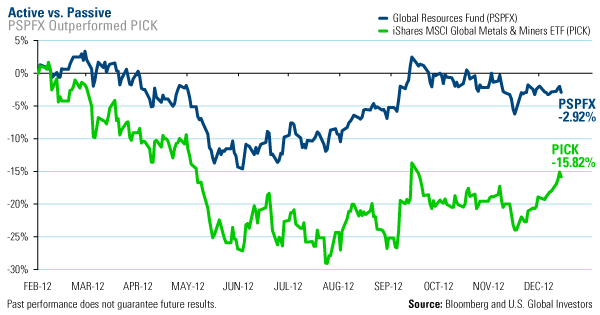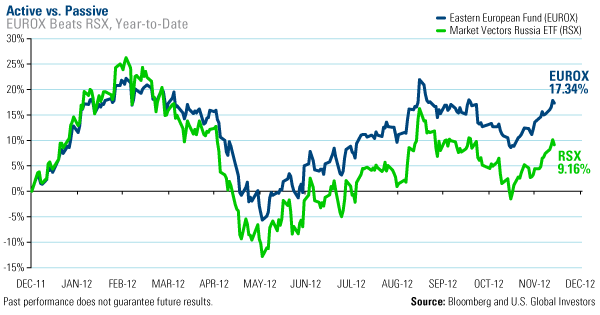Active V ETF Investing
Post on: 8 Апрель, 2015 No Comment

From an investment strategy standpoint, traditional exchange-traded funds (ETFs) are designed to track indexes. ETFs are available in hundreds of varieties, tracking nearly every index you can imagine; they offer all of the benefits associated with index mutual funds, including low turnover. low cost and broad diversification, plus their expense ratios are significantly lower. While passive investing is a popular strategy among ETF investors, it isn’t the only strategy. Here we explore ETF investment strategies to provide additional insight into how investors are using these innovative instruments.
Passive Investing
ETFs were originally constructed to provide a single security that tracks an index and trades intraday. Intraday trading enables investors to buy and sell, in essence, all of the securities that make up an entire market (such as the S&P 500 or the Nasdaq) with a single trade. It thereby provides the flexibility to get into or out of a position at any time throughout the day, unlike mutual funds, which trade only once per day. (To learn more, see Introduction To Exchange-Traded Funds and Advantages Of Exchange-Traded Funds .)
While the intraday trading capability is certainly a boon to active traders, it is merely a convenience for investors who prefer to buy and hold. which is still a valid and popular strategy — especially if we keep in mind the often-cited statistic that 80% of actively managed mutual funds fail to beat their benchmarks. In sum, ETFs provide a convenient and low-cost way to implement indexing, or passive management .
Active Trading
Despite indexing’s track record, many investors aren’t content to settle for so-called average returns. Even though they know that a minority of actively-managed funds beat the market, and they’re willing to try for a piece of that action. ETFs provide the perfect tool. By allowing intraday trading, ETFs give these traders an opportunity to track the direction of the market and trade accordingly. Although still trading an index like a passive investor, these active traders can take advantage of short-term movements. If the S&P races upward when the markets open, active traders can lock in the profits immediately.
So, all of the active trading strategies that can be used with traditional stocks can also be used with ETFs. These strategies include market timing, sector rotation. short selling and buying on margin.
The tradability of ETFs is not the only thing that makes them good tools for active trading. In the near future, another facet of active management may soon be available in the form of professionally managed ETFs.
Actively-Managed ETFs
While ETFs are structured to track an index, they could just as easily be designed to track a popular investment manager’s top picks, mirror any existing mutual fund or pursue a particular investment objective. Aside from how they are traded, these ETFs can provide investors/traders with an investment that aims to deliver above-average returns. While there aren’t as many actively-managed ETFs as there are mutual funds in the United States, they are growing in popularity.
Actively-managed ETFs have the potential to benefit mutual fund investors and fund managers as well. If an ETF is designed to mirror a particular mutual fund, the intraday trading capability will encourage frequent traders to use the ETF instead of the fund, which will reduce cash flow in and out of the mutual fund, making the portfolio easier to manage and more cost effective, enhancing the mutual fund’s value for its investors.
Transparency and Arbitrage

Actively-managed ETFs are not as widely available because there is a technical challenge in creating them. The major issues confronting money managers all involve a trading complication, more specifically a complication in the role of arbitrage for ETFs.
Because ETFs trade on a stock exchange, there is the potential for price disparities to develop between the trading price of the ETF shares and the trading price of the underlying securities. This creates the opportunity for arbitrage. If an ETF is trading at a value lower than the value of the underlying shares, investors can profit from that discount by buying shares of the ETF and then cashing them in for in-kind distributions of shares of the underlying stock. If the ETF is trading at a premium to the value of the underlying shares, investors can short the ETF and purchase shares of stock on the open market to cover the position.
With index ETFs, arbitrage keeps the price of the ETF close to the value of the underlying shares. This works because everyone knows the holdings in a given index. The index ETF has nothing to fear by disclosing the holdings, and price parity serves everyone’s best interests. (For more on this role of arbitrage, see An Inside Look At ETF Construction .)
The situation would be a bit different for an actively-managed ETF, whose money manager would get paid for stock selection. Ideally, those selections are to help investors outperform their ETF’s benchmark index. If the ETF disclosed its holdings frequently enough so that arbitrage could take place, there’d be no reason to buy the ETF: smart investors would simply let the fund manager do all of the research and then wait for the disclosure of his or her best ideas. The investors would then buy the underlying securities and avoid paying the fund’s management expenses. Therefore, such a scenario provides no incentive for money managers to create actively-managed ETFs.
In Germany, however, Deutsche Bank’s DWS Investments unit developed actively-managed ETFs that disclose their holdings to institutional investors on a daily basis, with a two-day delay. But the information isn’t shared with the general public until it is one-month old. This arrangement gives institutional traders the opportunity to arbitrage the fund, but provides stale information to the general public. In the United States, however, securities regulators are likely to frown on any arrangement that favors institutions over individuals, particularly in light of scandals that have occurred in the past.
Conclusion
Active and passive management are both legitimate and frequently used investment strategies among ETF investors. While actively-managed ETFs run by professional money managers are still scarce, you can bet that innovative money management firms are working diligently to overcome the challenges of making this product available worldwide.














